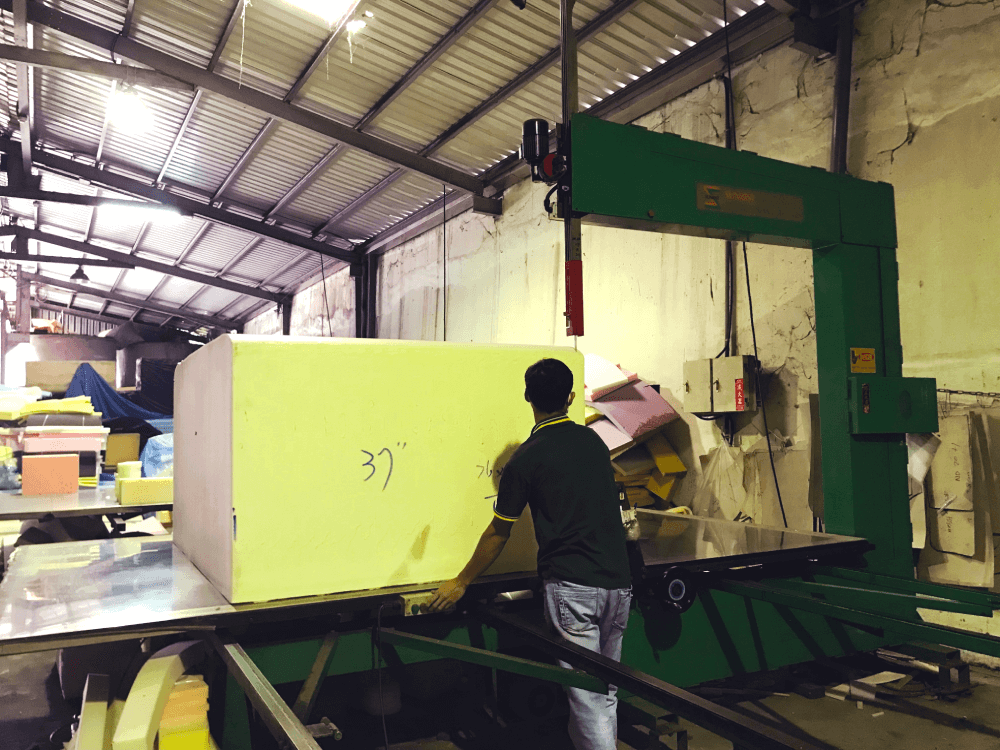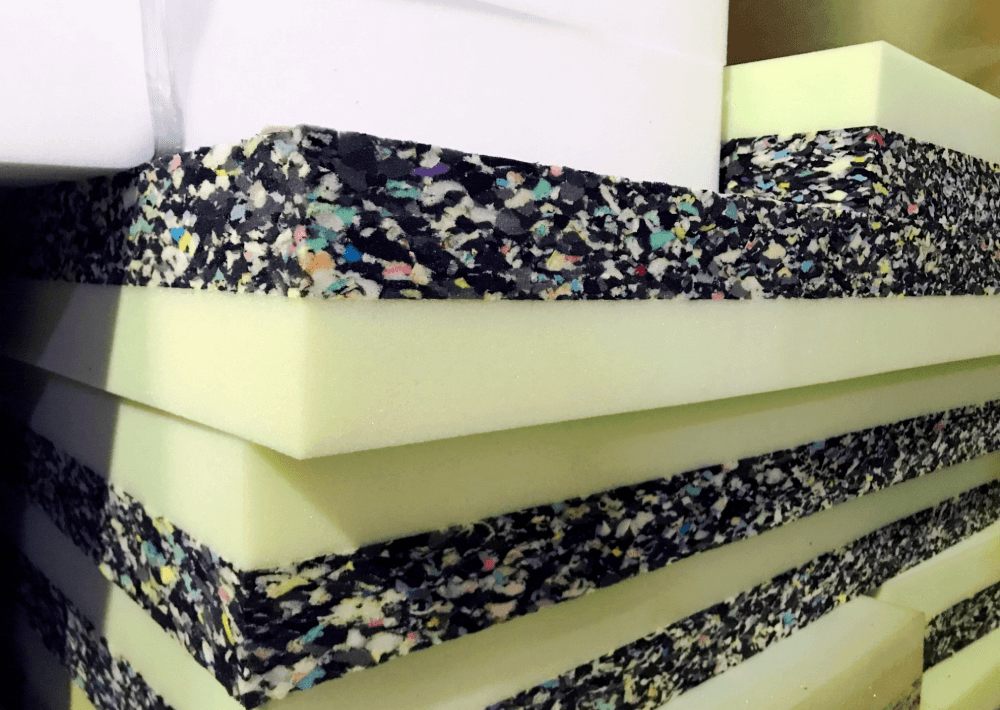Co-authored with Georg Hank from Company Alber in Germany
Sunkist has collaborated with Alber Germany again to discuss the density of polyurethane foam, why and when it matters, and the rule of thumb when pairing foam with bandknives.

Foam Density
The first and most important thing to know is that density does not equal hardness. We’ve covered this on a previous article. High density foam is not necessarily rigid foam, and foam that feels rigid to the touch is not necessarily high density.
That being said, high density foam typically has higher shelf-life. This is because low density foams have more surface area exposed to the air as well as less material in general. Low density foam is, of course, easier to produce. High density foam, however, is hardier and longer-lasting, so when given the option, Sunkist always recommends high density foam for product longevity.
Cutting Low Density Foam
Toothless blades are the best choice for cutting low density foam. They offer the best yield in terms of product quality and blade lifespan.
Most prominently, toothless blades offer a clean and smooth material surface after the cut. This is the reason most Sunkist customers opt for toothless blades on their continuous foaming line block cutters. With a smooth cut, there’s no need to trim that side again during conversion, saving you both time and material costs.
As bandknife experts, Alber also emphasizes the importance of the bevel, which is the angle of the blade as sharpened on either side. A precise and symmetrical bevel yields a straight cut without deviation, ideal for minimizing material loss from further trimming.

Cutting High Density Foam
Toothed blades have a higher cutting force and are the better choice for material with higher resistance—i.e. high density foams. This also applies to foam with hard skin or abrasive chemical content (e.g. carbon as a flame retardant and rebond foam).
This is Alber’s breakdown: smaller teeth on toothed blades yield a finer, smoother cut with less dust creation. Bigger teeth allow for faster cutting speeds and may extend the lifetime of the bandknife in the case of abrasive foams. Sharpening is used in some cases, reducing teeth height down to a certain point. Different tooth shapes and sizes allow for optimization based on each material type. Ask our experts to recommend the right blade for your machine.
Takeaways
Foam density does not equal foam stiffness. Smooth blades are in general the best choice for low density foams, while toothed blades are a good option for high density foam.
When you send Sunkist a quotation request, our Sales department asks you to fill out a questionnaire about production. Foam density is one of the most important questions you should answer. It allows our engineers to design the best option for you.